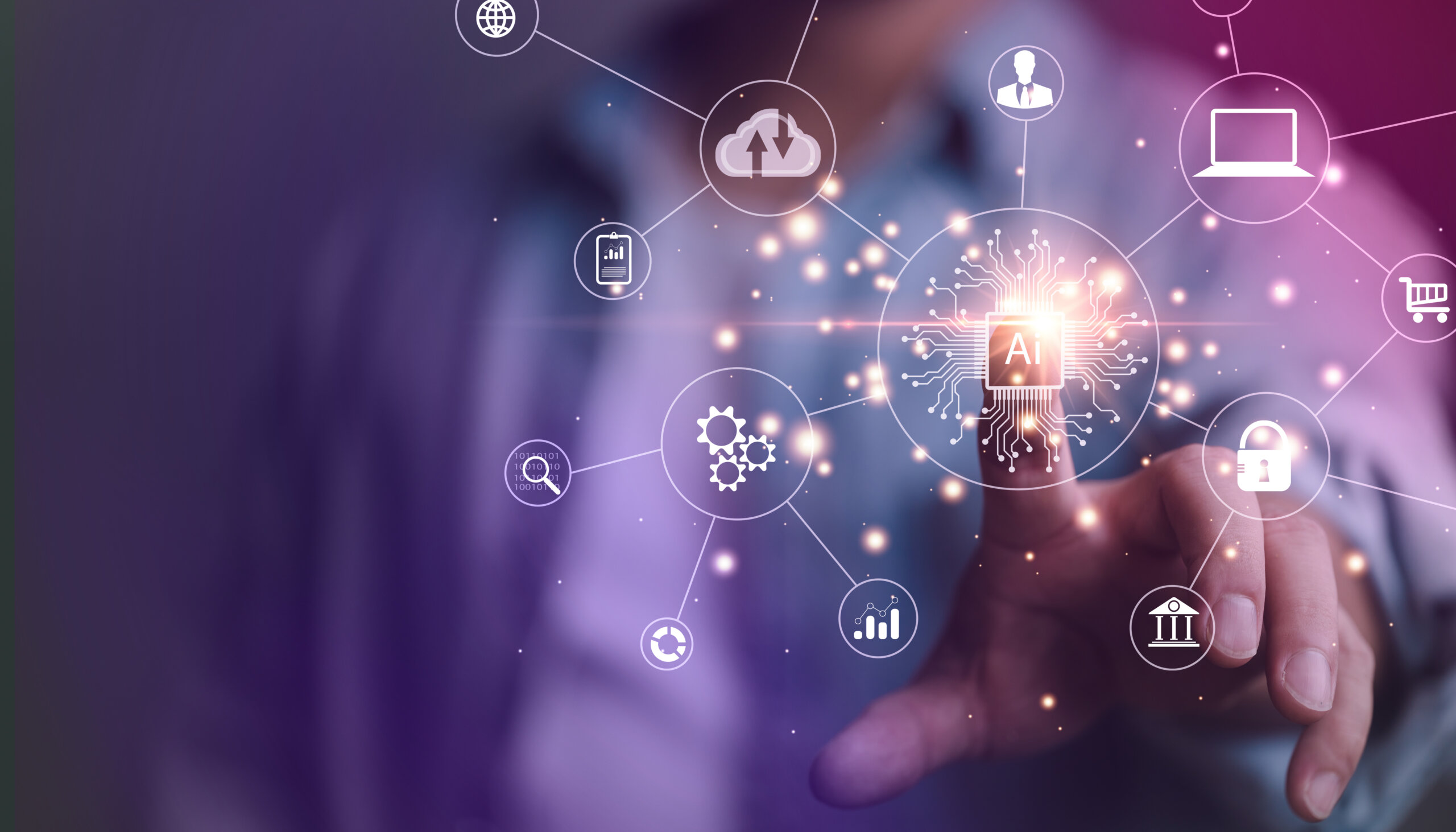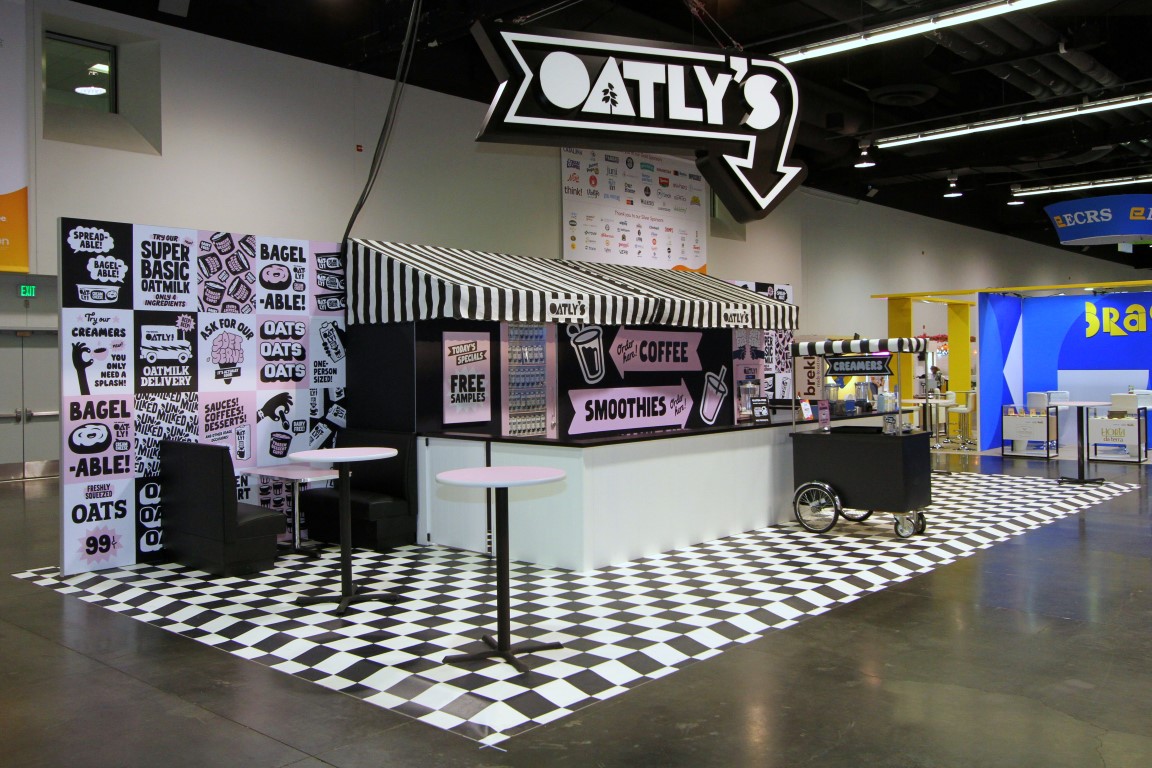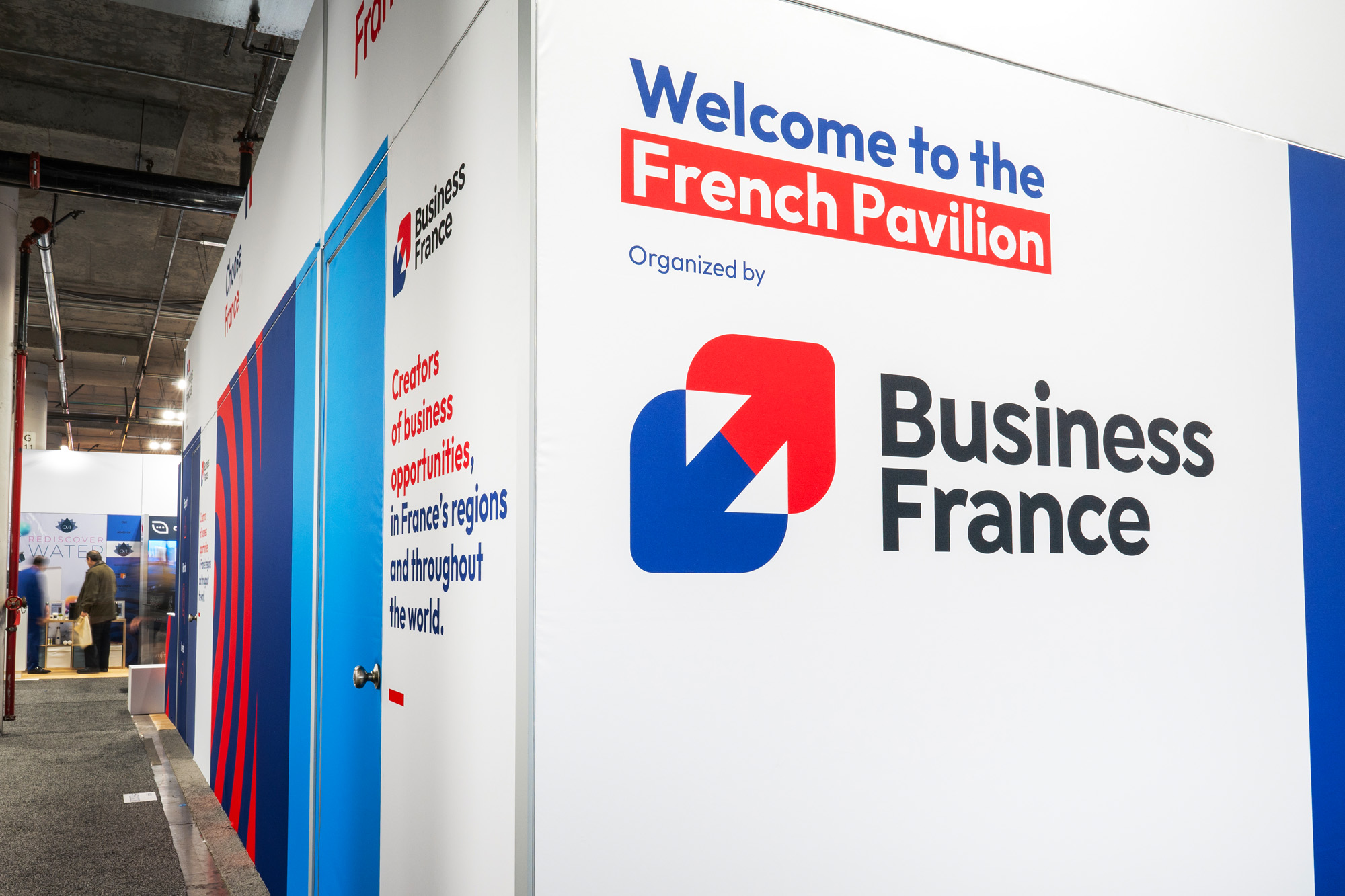AI’s influence in the events and experiential marketing industry is growing rapidly. Whether it’s automating mundane tasks, speeding up how quickly teams generate original creative concepts, or enhancing audience engagement, AI is helping marketers deliver more impactful experiences at scale. Integrating AI into the exhibit design process has opened up new possibilities, allowing brands to iterate faster, make data-driven decisions, and create more meaningful interactions with their audiences.
From streamlining backroom operations to enhancing client-facing technology, AI is transforming how experiential marketing campaigns are conceived, executed, and measured. Here’s a closer look at the trends that are taking shape, and where they’re likely to lead in the year ahead.
Speeding up creative iteration with AI-powered tools.
One of the most significant advantages AI brings to the creative process is speed. It’s important to note: these tools aren’t replacing human creativity, but they’re unleashing new possibilities and speeding up the process.
Trade shows, live events, and corporate and retail projects are all working on tighter timelines where every second matters. AI-supported tools offer creative teams the ability to quickly generate, test, and refine ideas and original concepts.
AI tools can analyze vast amounts of data, quickly generate creative concepts based on your creative team’s ideas, and even produce initial visual assets in a fraction of the time it would take by hand. This accelerated iteration process allows exhibit design services teams to explore more options, test different approaches, and arrive at the best possible solution faster than ever before.
For example, AI-powered design tools can generate multiple versions of a visual concept based on predefined parameters, allowing teams to compare and refine ideas quickly. This not only saves time but ensures that the final output is more polished and aligned with the brand’s goals. As a result, brands can bring their ideas to life more efficiently, keeping up with the rapid explosion of ideas in the market.
Pairing AI with heatmapping technology.
AI’s impact extends beyond the creative backroom and into the trade show exhibit space itself. Event marketing teams are pairing AI with technologies that gather data about booth or exhibit engagement, and quickly analyzing data for real-time pivots. By pairing AI with heatmapping technology, brands can gain critical real-time insights into how attendees interact with their spaces. Heatmapping technology tracks people’s engagement and movement within booths or event spaces, providing data on which areas are most visited and which experiences resonate the most.
AI identifies patterns and makes actionable suggestions. For instance, if certain areas of a booth are consistently drawing more attention, AI may suggest reallocating resources to enhance those areas, updating engagement scripts to point out overlooked features, or tweaking the layout to improve flow. Real-time analysis allows brands to make adjustments on the fly, optimizing the attendee experience and maximizing the impact of their presence at the event. The same data can be part of an event post-mortem and looped into improvements for future shows.
Tracking sentiment with AI.
AI can also help you understand how experiences are being received and whether attending a specific event is connecting you with your audience. Understanding attendee sentiment is crucial for trade shows and events. Historically, gathering this data was through subjective observation or clunky surveys. AI tools can listen to conversations, analyze social media interactions, and use other metrics to track brand and event sentiment in real-time.
For example, if AI detects a negative sentiment trend around a particular aspect of an event, marketers can quickly address the issue, whether by adjusting messaging, offering additional support, or tweaking the experience. Positive sentiment data can be leveraged to amplify successful elements, ensuring they are highlighted and take a central role at the event.
Improving lead collection and generation.
AI is also changing how event marketers approach lead collection and generation during live events. Traditional methods of collecting leads, such as scanning badges or exchanging business cards, are being augmented by AI-powered tools that can identify and qualify leads more effectively. AI can analyze attendee behavior, engagement levels, and interactions to determine which leads are most likely to convert, allowing sales teams to prioritize their efforts. Scanning badges in real-time can also signal to onsite staff when a high-value prospect in onsite, for example a representative from a brand that’s a top target account.
Tools like AI-driven chatbots can engage with attendees in real-time, answering questions, providing information, and even collecting contact details. Chatbots can be integrated into event apps or websites, ensuring that potential leads are captured at every touchpoint. The result is a more efficient and effective lead generation process, ultimately driving better ROI for brands.
Leveraging analytics for strategy, planning, and creative.
Predictive analytics, powered by AI and machine learning, is becoming a highly useful tool for exhibit design planning. By analyzing historical data and current trends, AI provides insights into what will resonate with audiences, what challenges might arise, and how to allocate resources most effectively. Brands acting on data can be more proactive rather than reactive, allowing them to make more informed investments and decisions.
In the creative process, AI-driven predictive analytics can help teams anticipate the concepts will perform best or rapidly produce variations of an original design, allowing them to test widely and then focus their efforts on the ideas with the greatest potential.
Delivering personalized experiences through AI.
Personalization has been a significant trend in experiential marketing, and that’s only continuing to become more influential. AI is making it possible to deliver highly customized experiences at scale. For example, certain AI tools can analyze attendee data to create personalized content, adjust messaging and creative displayed via digital screens, and tailor experiences in real-time with a named greeting.
Another example is intelligent product demos that can adapt based on an attendee’s behavior, preferences, or engagement history, creating a more relevant and impactful experience that maps to the features of interest of that person. Personalization not only enhances the attendee experience but also increases the likelihood of achieving desired outcomes, whether that’s generating leads, driving sales, or building brand loyalty.
Embracing AI in experiential marketing.
AI is here to stay in the world of trade show exhibit services and experiential marketing. From speeding up creative iteration and enhancing lead generation to leveraging predictive analytics and heatmapping technology, AI is becoming a powerful tool for marketers looking to stay ahead of the curve. As AI continues to evolve, its role in experiential marketing will only grow, offering even more opportunities to create powerful, memorable experiences that resonate with audiences.
Not sure where to get started with technology and AI in your campaigns? Read our eBook to discover how the right partner can help you navigate these critical decisions.








